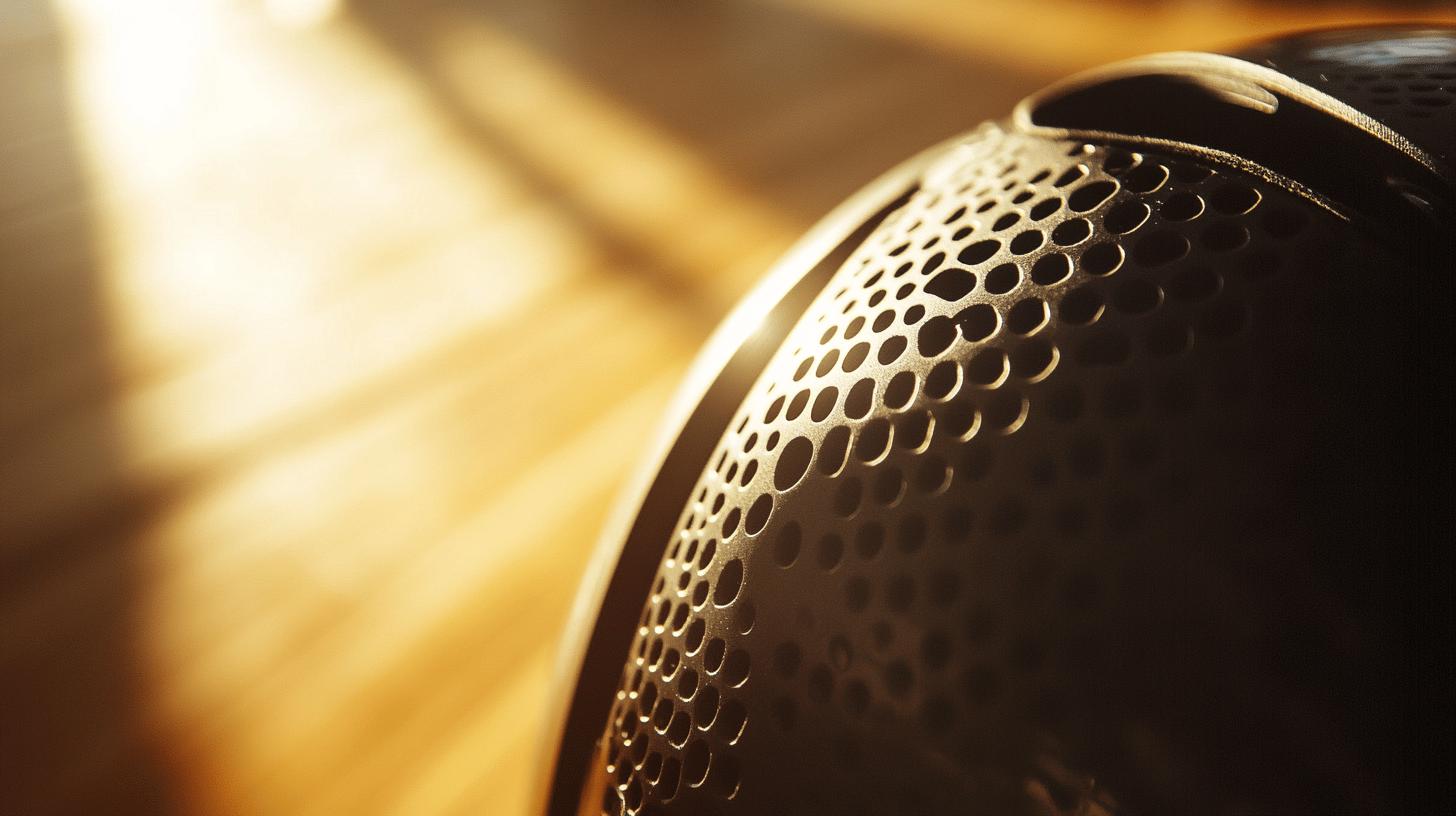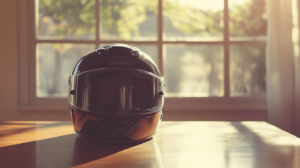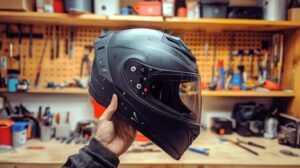Are men's and women's motorcycle helmets really that different, or is it just a matter of marketing? Understanding gender-specific helmet design is essential for every rider who values safety and comfort.
With anatomical distinctions influencing everything from fit to aesthetics, these helmets are more than just a pretty face. This article will delve into the intricate details, from additional padding and strap designs in women’s helmets to the robust features in men’s versions.
Whether you're looking for safety, style, or both, knowing what sets these helmets apart will enhance your riding experience.
Understanding Gender-Specific Helmet Design

Gender-specific helmet design plays a crucial role in ensuring both safety and comfort for riders. Anatomical differences between men and women, particularly in head shapes, necessitate distinct design elements to optimize fit. Properly fitting helmets are vital for effective protection, reducing the risk of injury in the event of an accident.
Women’s helmets often incorporate unique features tailored to address these anatomical distinctions.
-
Additional Padding: Women's helmets typically have more interior padding to ensure a snug fit, accommodating smaller head sizes and different contours.
-
Strap Design: Specially designed straps in women’s helmets provide enhanced security and comfort, catering to narrower chin and jaw lines.
-
Hair Accommodation: Consideration for longer hairstyles is evident in many women's helmet designs, offering features like ponytail ports or adjustable liners.
-
Weight Distribution: Designs often distribute the weight away from the scalp to prevent discomfort, particularly important for those with longer hair.
-
Ergonomic Fit: Adjustments for different facial structures and smaller head circumferences enhance overall comfort and safety.
The aesthetics of helmets also vary based on gender-targeted preferences. Women's helmets frequently boast more stylish and attractive designs, often featuring vibrant colors and decorative elements.
These aesthetic choices not only appeal visually but also reflect a broader trend in gender-targeted marketing, where design plays a pivotal role in consumer preference. Men’s helmets, on the other hand, tend to focus on sleek, aerodynamic profiles that prioritize function over form.
Size and Fit: Men’s vs. Women’s Helmets

Proper fit in motorcycle helmets is paramount for ensuring safety and comfort during rides. A poorly fitting helmet can compromise protection in an accident, while a well-fitted one can significantly reduce injury risk. The differences in size and fit between men's and women's helmets primarily stem from anatomical variations in head shapes and sizes.
Women's Helmet Fit Considerations
Women's helmets typically feature designs that accommodate smaller head sizes and shapes. These helmets often include additional padding to ensure a snug fit, adapting to the unique contours of a woman's head.
Longer hairstyles are a critical consideration in women's helmet design. Features such as ponytail ports or adjustable liners help distribute hair weight away from the scalp, enhancing comfort and preventing potential scalp injuries during long rides.
Size adjustments are crucial, with many women's helmets offering customizable fit options to address different facial structures and smaller head circumferences.
Men's Helmet Fit Considerations
Men's helmets generally cater to larger head sizes and broader shapes. These designs often focus on providing an aerodynamic profile that accommodates a typically wider jaw and chin area.
Men's helmets prioritize a balance between fit and airflow, ensuring comfort during rides without compromising safety. The interior padding is strategically placed to adapt to common male head shapes, offering a secure fit that minimizes movement.
Fitment guides are indispensable tools for selecting the correct helmet size for both genders. By providing detailed measurements and fitting techniques, these guides assist riders in finding helmets that offer optimal protection and comfort. Proper use of fitment guides ensures that each helmet fits as intended, enhancing overall safety for both men and women on the road.
Safety Standards and Certifications

Safety standards for helmets are fundamental in protecting riders, regardless of gender. A common certification, the Department of Transportation (DOT) approval, is crucial as it signifies that the helmet meets the minimum safety criteria established by federal regulations.
Helmets that carry this certification provide a level of assurance that they have undergone rigorous testing for impact resistance and penetration, ensuring the helmet's protective capabilities are up to standard.
| Certification | Purpose |
|---|---|
| DOT | Ensures compliance with U.S. federal safety standards, focusing on impact protection and penetration resistance. |
| ECE | European safety standard that evaluates helmets for energy absorption, retention system strength, and field of vision. |
| Snell | Voluntary standard that tests helmets for high-impact scenarios, offering additional protection criteria beyond DOT. |
Crash test ratings further inform helmet choices by providing insights into their protective performance during simulated collisions. These ratings assess factors like impact absorption and structural integrity, offering a comparative view of how different helmets might perform in real-world accidents.
Choosing helmets with high crash test ratings can significantly enhance a rider's safety, as these helmets have demonstrated superior protective capabilities under controlled testing conditions.
Comfort and Interior Features

Comfort in motorcycle helmets is paramount, influencing both the safety and satisfaction of the rider. Helmets that provide superior comfort not only encourage consistent use but also enhance riding enjoyment by reducing fatigue and distractions.
The design of interior features plays a crucial role in differentiating men's and women's helmets, as these components are tailored to address the unique needs of each gender.
-
Interior Liner Material: Women's helmets often use softer, moisture-wicking liners to enhance comfort, accommodating smaller head sizes and shapes.
-
Padding Types: Additional padding is common in women's helmets, offering a snug fit that conforms to different head contours.
-
Cheek Pad Design: Customizable cheek pads in both men’s and women’s helmets allow for a personalized fit, improving comfort and stability.
-
Removable Liners: Many helmets offer removable and washable liners, ensuring hygiene and extending the life of the helmet.
-
Foam Density: Varying foam densities are used to balance comfort with impact absorption, with women's helmets sometimes incorporating softer foams for a gentler fit.
-
Strap Padding: Enhanced strap padding reduces pressure on the chin and jaw, a feature often more pronounced in women’s helmet designs.
Ventilation systems and noise reduction features further elevate the comfort levels of motorcycle helmets. Well-designed ventilation systems facilitate airflow, keeping riders cool and comfortable during long rides.
Noise reduction technology minimizes wind and road noise, allowing for a more pleasant riding experience. These features, combined with the carefully selected interior materials and padding, ensure a helmet that not only protects but also provides a luxurious feel, catering to the distinct preferences and anatomical differences of male and female riders.
Style and Aesthetic Preferences in Helmets

Aesthetic preferences significantly influence helmet choice, with distinct differences often observed between men's and women's designs. Women's helmets typically feature more stylish elements, reflecting trends and personal tastes that prioritize appearance.
These designs often incorporate vibrant colors and decorative patterns, appealing to those seeking both form and function in their protective gear. Men's helmets, conversely, tend to emphasize sleek, minimalist styles that focus on aerodynamic efficiency over ornamental detail.
-
Vibrant Colors: Women's helmets frequently come in bright, eye-catching colors, providing a bold statement while enhancing visibility.
-
Decorative Patterns: Many women's helmets include floral or geometric patterns, adding a personal touch to the design.
-
Glossy Finishes: Shiny finishes are popular in women's helmet designs, offering a polished look that stands out.
- Customizable Graphics: Some women's helmets offer options for custom graphics, allowing riders to express individual style preferences.
Gender-targeted marketing plays a pivotal role in shaping these design choices. By aligning helmet aesthetics with perceived gender preferences, manufacturers can effectively cater to specific consumer segments.
Marketing strategies often highlight features that resonate with gender-specific interests, such as emphasizing elegance and style for women, or performance and durability for men. This targeted approach not only influences buying decisions but also reinforces the distinct visual identities associated with men's and women's motorcycle helmets.
Final Words
Exploring men's and women's motorcycle helmets reveals key design and comfort differences, guided by anatomical considerations. Women's helmets often feature additional padding, stylish designs, and hair accommodations, enhancing safety and aesthetic appeal.
Men's helmets prioritize typical head shapes and robust design elements. Safety standards, certifications, and comfort enhance both genders' helmet use. Aesthetic preferences also play a significant role, driven by gender-targeted marketing.
Understanding these factors clarifies what is the difference between men's and women's motorcycle helmets, contributing to a safer, more enjoyable ride.
FAQ
Are bike helmets gender specific?
Bike helmets are not strictly gender-specific, but differences do exist. Women's helmets may feature tailored designs for diverse head shapes, additional padding, and specialized straps to enhance fit and comfort.
Are men's and women's helmet sizes different?
Men's and women's helmet sizes can differ due to anatomical variations. Women’s helmets are often slightly smaller and consider different head shapes. Sizing guides can help find the right fit for both genders.
What is the difference between men's and women's motorcycle jackets?
The primary difference lies in design and fit. Women’s motorcycle jackets often accommodate for waist and bust, with a more contoured shape, while men's jackets typically feature broader shoulders and a straighter cut.
Is it better to size up or down when choosing a motorcycle helmet?
When selecting a motorcycle helmet, achieving a snug fit is vital. It's recommended to choose a size that is close-fitting without pressure points. Use a fitment guide to find the perfect size.
What are the best bike helmets for women?
The best bike helmets for women prioritize safety, comfort, and style. Features include additional padding, efficient ventilation, and attractive designs. Consider helmets with DOT or ECE certifications for reliable protection.
Do women's helmets consider hair accommodations?
Women's helmets often include design features for hair accommodations. Adjustability and fit are tailored to handle various hairstyles, ensuring comfort without compromising safety.

Brad Mitchell is a seasoned motorcycle enthusiast with over 16 years of riding experience. He’s spent countless hours on the open road, particularly favoring scenic routes aboard his trusted Harley-Davidson. Brad’s laid-back approach to life and riding gives him a unique perspective on motorcycle gear and safety, which he shares through his in-depth reviews and expert advice on ProtectiveGearz.



